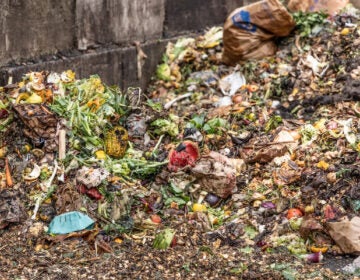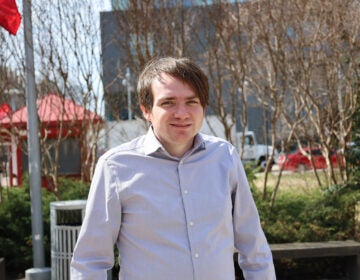Mars bar won’t have beer, but dandelion wine is a possibility
Villanova students participating in “Red Thumbs Mars Garden Project” have been nurturing plants that might someday thrive in greenhouses 34 million miles from Earth.
Listen 1:58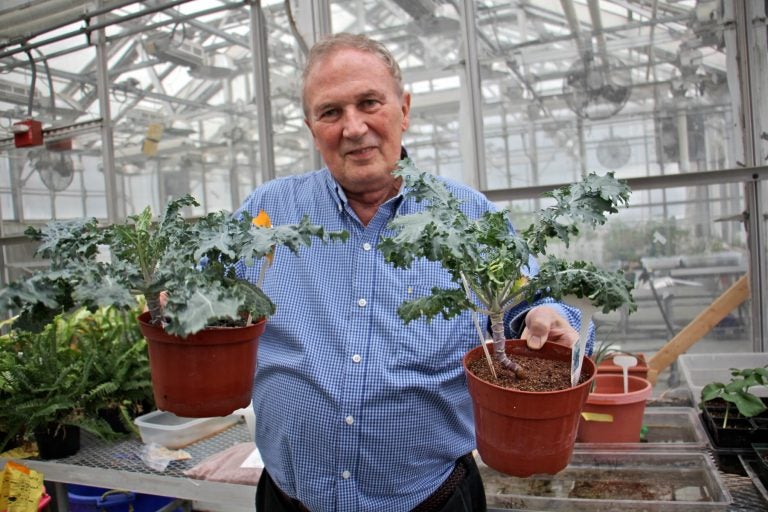
Ed Guinan, a professor of astrophysics and planetary sciences at Villanova University, holds two kale plants grown by his undergraduate students, one grown in Earth soil (left) an the other in a 50 percent mix with a material that simulates Martian soil (right). The kale attempted in 100 percent Martian soil perished. (Emma Lee/WHYY)
After breaking ground as one of the first college courses on studying how to grow food on Mars, an astrobiology class at Villanova University is gearing up for another semester’s harvest as students continue experimenting in theoretic agriculture.
Participating in the “Red Thumbs Mars Garden Project,” they have been nurturing an array of plants that might someday thrive in greenhouses 34 million miles from Earth — and sustain settlers of the Red Planet.
So what does — and doesn’t — grow in martian soil?
When choosing a plants for Mars, you want something that’s renewable, doesn’t need a lot of light, and is very hardy, said astronomer and professor Edward Guinan. That includes some greenery that could figure in alcoholic beverages.
“Mars is cold. A high temperature on a certain day could go up to 60 degrees for a few hours,” he said. “And then, that very night, it would be minus 40 minus 50.”
The soil his class uses is called Mars simulant — a sterile red powder sourced from the Mojave Desert. Every time it’s watered, the powder forms a thick clay that chokes roots. Small salad greens did well in that medium, but potatoes did not.
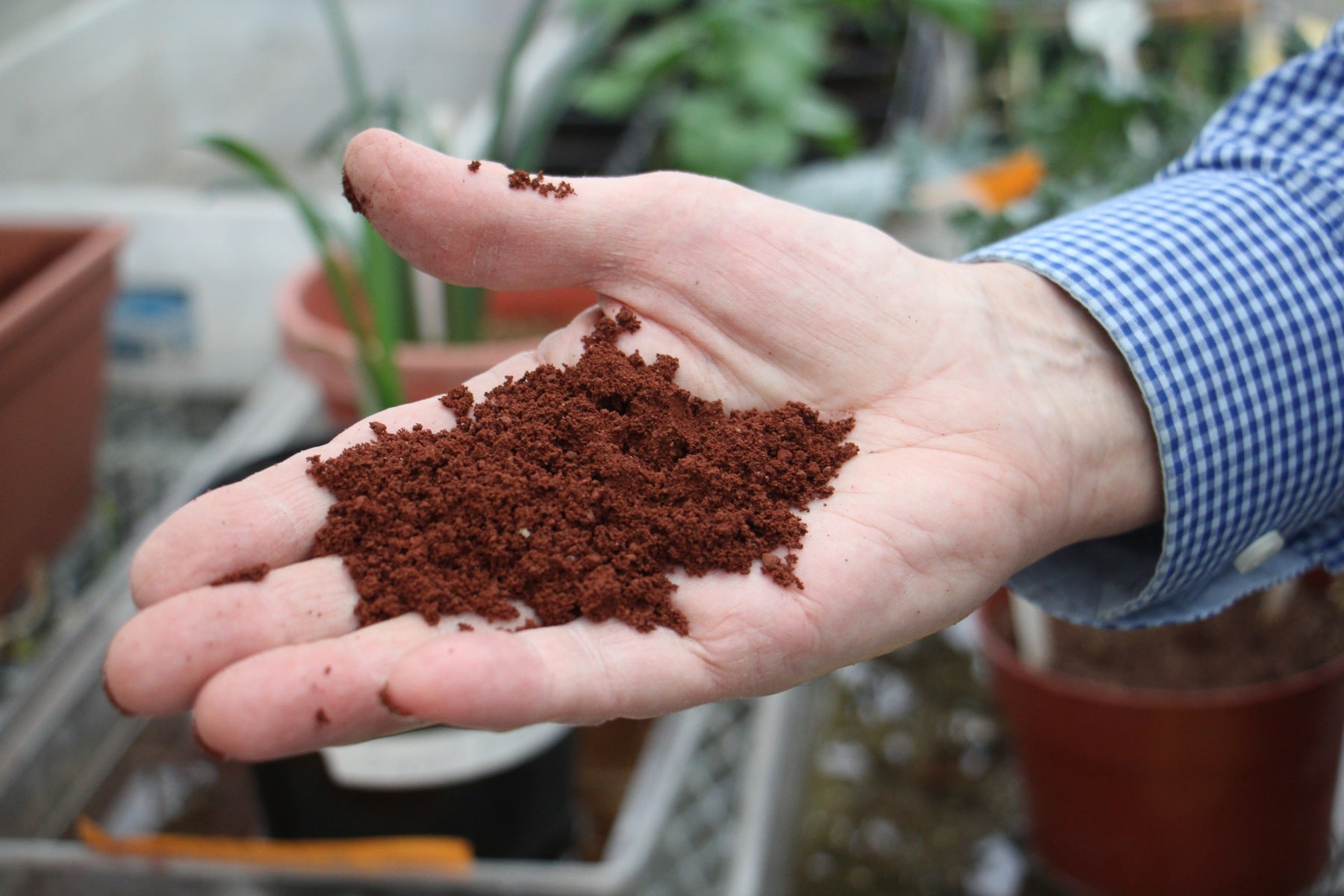
To help aerate the soil, the class began mixing in other materials including cardboard, plastic pieces, and compost. And, this semester, Guinan sourced some “aliens” to help the colony.
“Martian worms, not earthworms, martian worms,” he said with a laugh. “We have 500 worms coming and we’re going to see how they do with a martian soil mixed with garbage in it.”
Guinan, who discovered the earliest evidence of rings around Neptune, came across the idea while tending to his own garden.
Students were asked to choose plants they thought would sustain life on Mars.
Ginnina Guzman chose garlic because of its benefits for the digestive system and mint “because it’s good for your sinuses. When we’re on Mars, because there’s less gravity, a lot of our fluid will go up in our bodies, so we might have more sinus problems.”
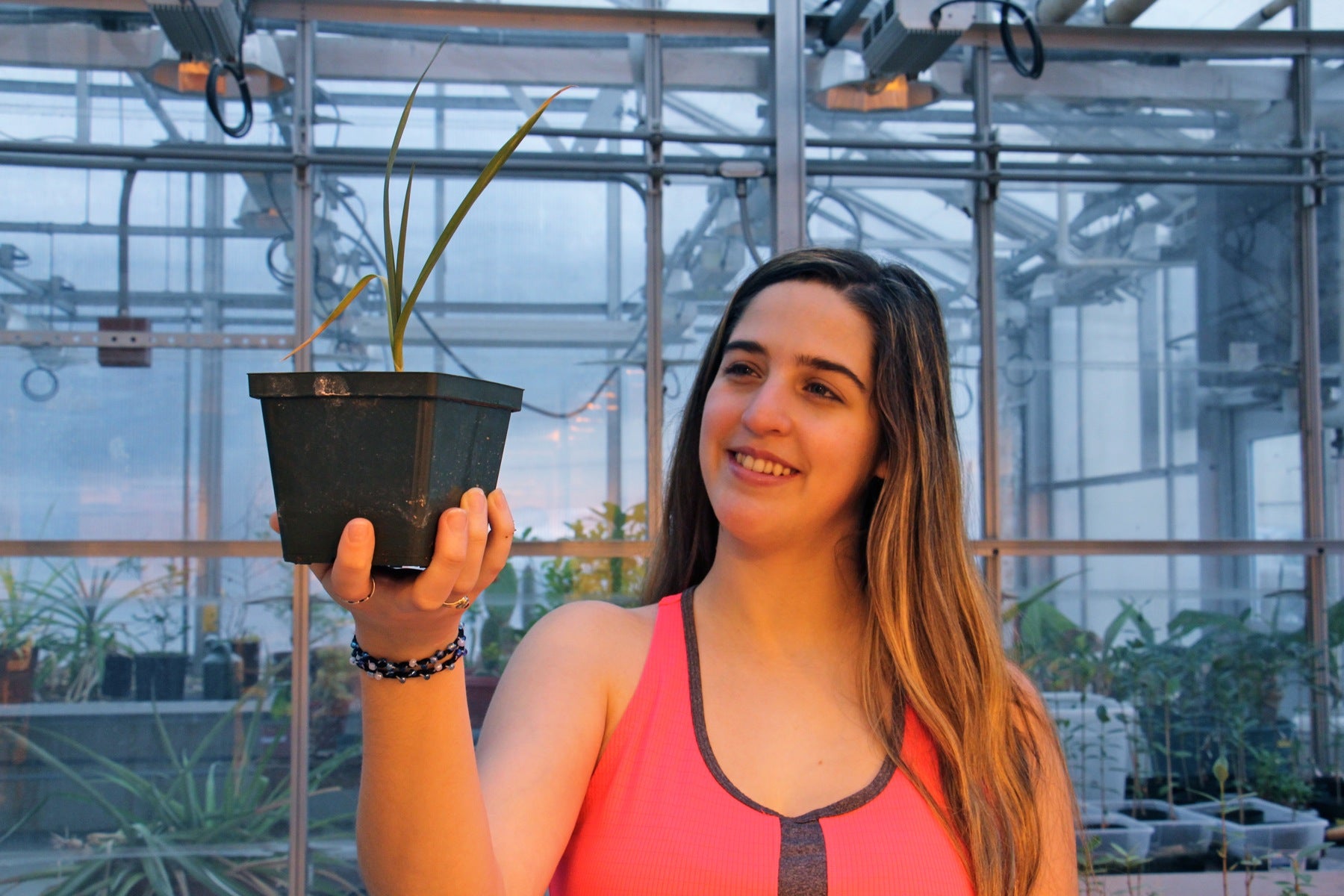
Hops, which are essential to brewing beer, flowered well enough in the simulant — and brought national attention to the program at Villanova outside Philadelphia.
“But there’s no way you could grow enough of it to make beer,” said Guinan.
To satisfy students’ desire to make alcohol, Guinan said, they will try growing barley. And if worst comes to worst, he said dandelions will grow anywhere.
“I picked plants the students didn’t like. I picked dandelions because you can eat the leaves, the root, and you can eat the flower,” said Guinan as he pointed to a plant that survived winter break. “But [the students] didn’t like the idea of eating dandelions. They did like the idea of making wine out of the dandelion flower, though.”
This semester will be more scientific with side-by-side controls. Guzman, a junior studying astrophysics, is taking daily measurements for her first publishable paper. She said the project inspired her to pursue a doctorate in astrobiology.
“It might look like, ‘Oh, they’re just growing plants.’ But it’s something that, in the end, might actually contribute a lot to how we establish a colony on Mars and how we take care of that,” she said.
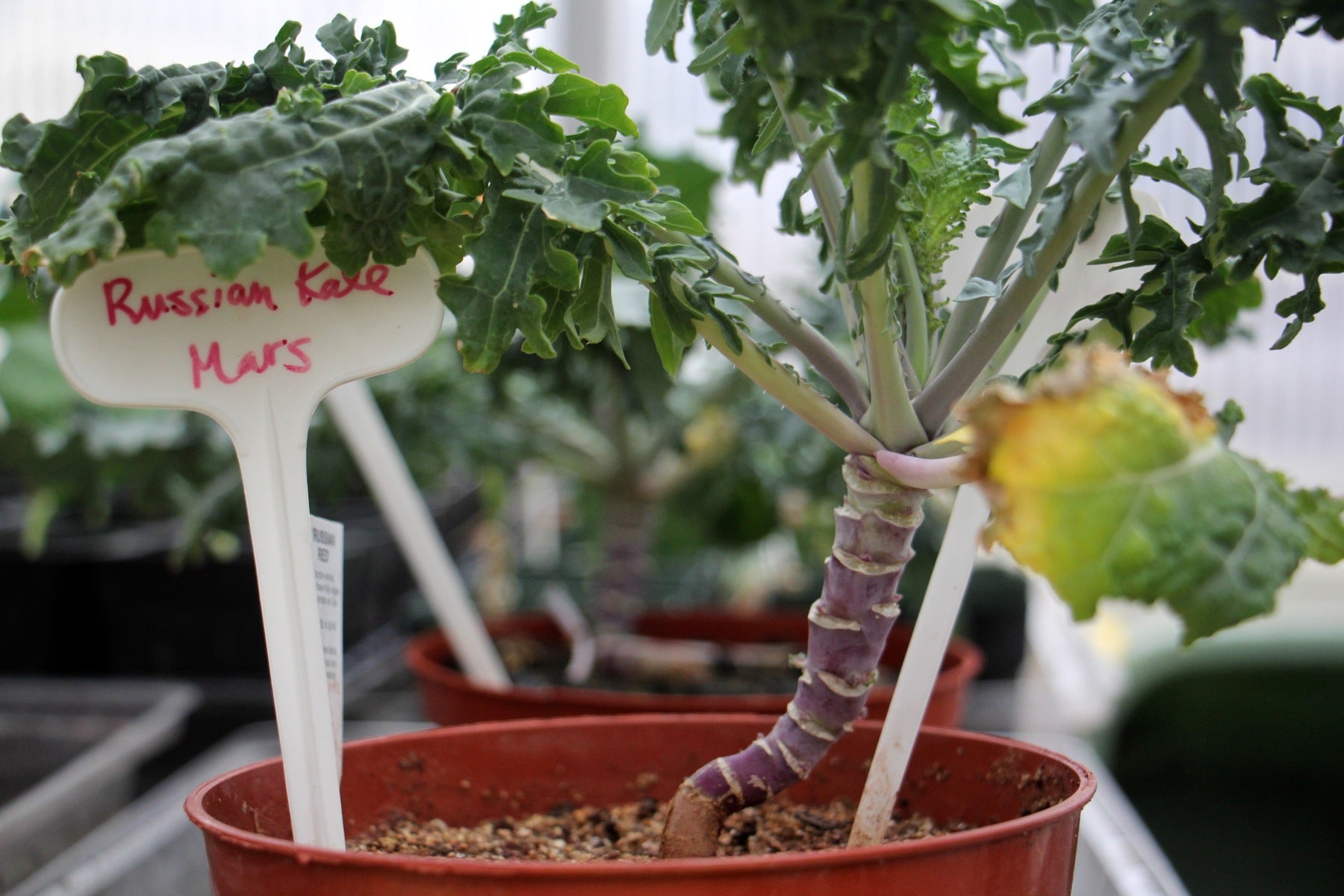
WHYY is your source for fact-based, in-depth journalism and information. As a nonprofit organization, we rely on financial support from readers like you. Please give today.


